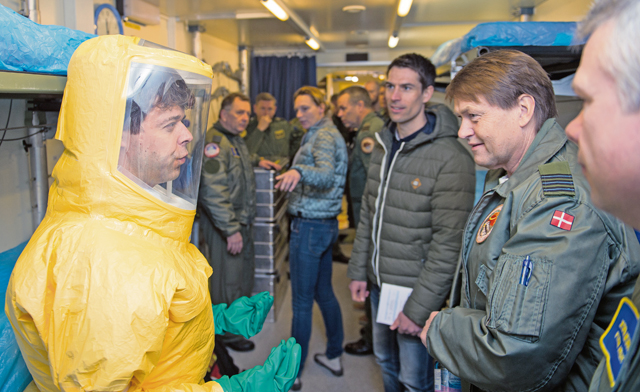
The largest U.S. Air Forces in Europe aerospace medicine summit was held March 9 to 13 on Ramstein.
More than 200 medical professionals from 19 nations met for the 30th Ramstein Aerospace Medicine Summit and NATO Science and Technology Organization Technical Course. The forum discussed everything from flying, medicine or even if the famous World War I German fighter pilot, the Red Baron, would be qualified to fly by today’s standards.
“In one form or another, this unique international medical assembly has been bringing together aerospace medical professionals to share knowledge and network for 30 years,” said Dr. (Lt. Col.) Todd Huhn, U.S. Air Forces in Europe and Air Forces Africa command surgeon aerospace and operational medicine branch chief.
Two objectives of the conference were to share knowledge and network, but the overall idea for the conference was for the well-being of Airmen — something the Red Baron’s aerospace doctors kept in mind after he was shot down. After the Red Baron decided to ignore the doctor’s advice, the fighter pilot flew and attained 23 more victories. However, it was agreed that he should have been grounded and given time to recover.
“Safety is always very important for us in aerospace medicine,” Huhn said. “If we can prevent just one mishap by sharing information and getting better, it makes it worthwhile.”
Topics covered during the week included: aeromedical evacuation, aviation safety, medevacing in the Arctic, G-suit advances and in-flight emergencies. In order to prevent accidents, the conference shared the experiences and knowledge of more than 53 presenters.
“This conference is very good, because I don’t know other nations very well and this is giving me an opportunity to understand more about them,” said Maj. Frederic Colleu, French air force senior flight surgeon. “I like hearing the American and European capabilities. It’s very interesting and helpful for me and my work as a flight surgeon.”
The participants also got a firsthand view into the U.S. Air Force and Danish aeromedical evacuations during the tours of their aircraft.
Huhn said the event is one way USAFE is ensuring that Airmen are ready and safe no matter the nation, continent or flying status.







